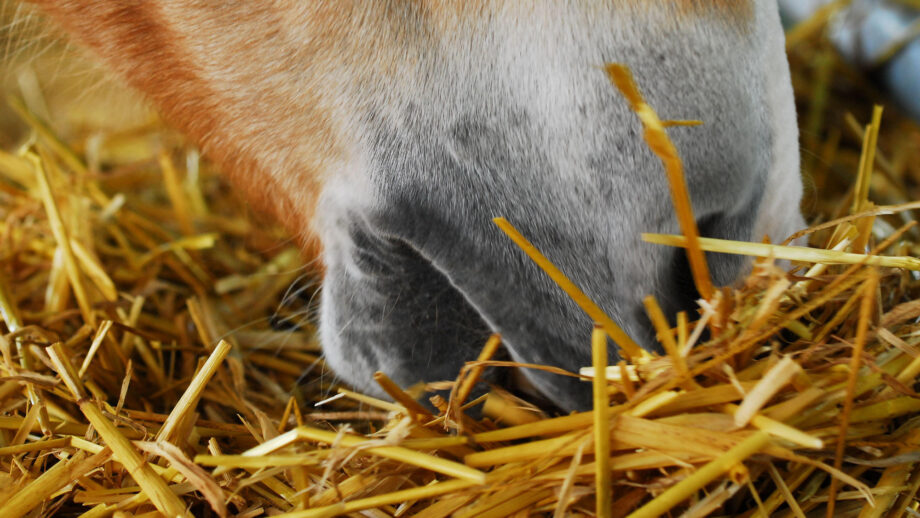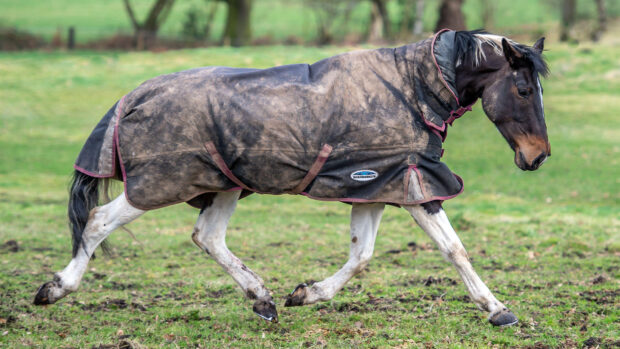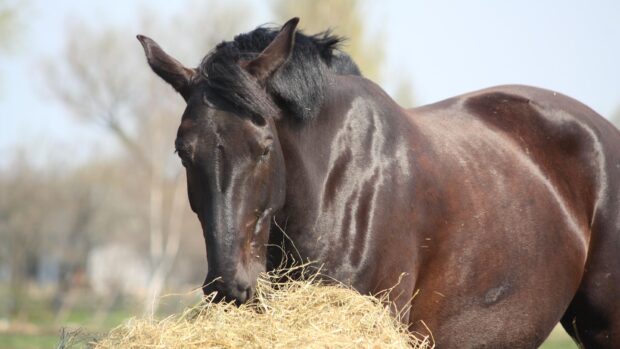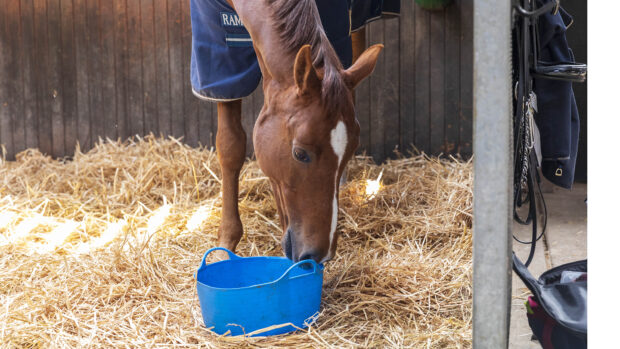Horses get through bale upon bale of hay through winter, but can horses eat straw? The short answer is yes. Not only is straw safe for horses to eat, but there are also benefits to including this type of forage in your horse’s ration, too.
“As long as it’s introduced and fed correctly, straw can be really invaluable,” remarks independent equine nutritionist Clare MacLeod MSc RNutr. “Lots of owners feed it nowadays alongside their horse’s hay ration. It’s a great choice if you want to increase the time your horse spends eating without adding excessive calories.”
Rules of feeding straw to horses
There are a few golden rules for feeding straw. Firstly, as with any feed or forage, straw must be introduced into a horse’s diet gradually.
“If you have a grass-kept horse that comes in to a straw bed for the night and munches away for hours, problems may arise,” says Clare. “This is where the old-fashioned idea that eating straw causes impaction colic came from.
“While such a dramatic change from a grass diet to a large quantity of dry straw does represent a colic risk, research from Europe shows straw is perfectly safe to feed when done correctly and introduced slowly.”
Secondly, it’s essential to ensure your horse is drinking plenty of water.
“Ensure your horse has free access to clean fresh palatable water,” says Clare. “In winter, some horses drink too little if the water is very cold, but when you feed straw you need to be sure they are drinking plenty. Don’t make assumptions that just because a trough or tub is full, that it’s enough.”
Thirdly, take care to balance the diet correctly.
“Straw is lower in protein and minerals than hay, as well as providing less energy,” Clare explains. If you’re unsure how to correctly balance your horse’s diet, speak to a nutritionist for advice.
Finally, consider your horse’s teeth.
“Veterans or those with poor dentition might struggle to chew straw, so a softer hay may be more suitable,” she adds.
If you’re looking for other ways to make your horse’s hay ration last longer, small-holed haynets and slow feeders are a good idea.
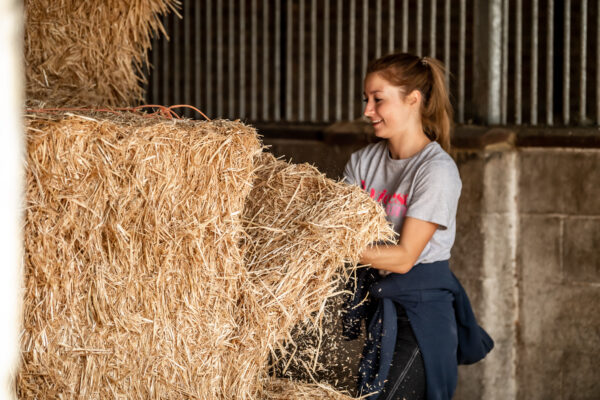
What straw can horses eat?
For Clare, the type of straw you feed isn’t the most crucial part of the story.
“Oat, wheat or barley straw is all fine to feed,” she comments. “What matters is that we feed hygienic straw.”
What does this mean?
“Hygienic straw is bright yellow,” explains Clare. “It shouldn’t be grey, brownish or dark in hue or clump together, because that could indicate the presence of mould.
“We also want to ensure the straw is low in dust and doesn’t have any musty smell.”
Clare adds that ideally, the straw should not have been sprayed with any chemical.
“Some farmers spray the straw to dry it out, or use pesticides and herbicides on their crops,” remarks Clare. “Ask whoever you plan to source straw from if this is the case.”
With hay prices ballooning this year, many owners are looking for ways to reduce their hay bill. While feeding straw alongside hay can help, Clare urges owners to prioritise sourcing quality forage.
“When the supply is stretched, people can sometimes panic and buy anything they can,” says Clare. “But do go and check out any forage before you buy it.
“Or, if you can’t go in person, consider buying a small amount first to check the quality before placing a bigger order.”
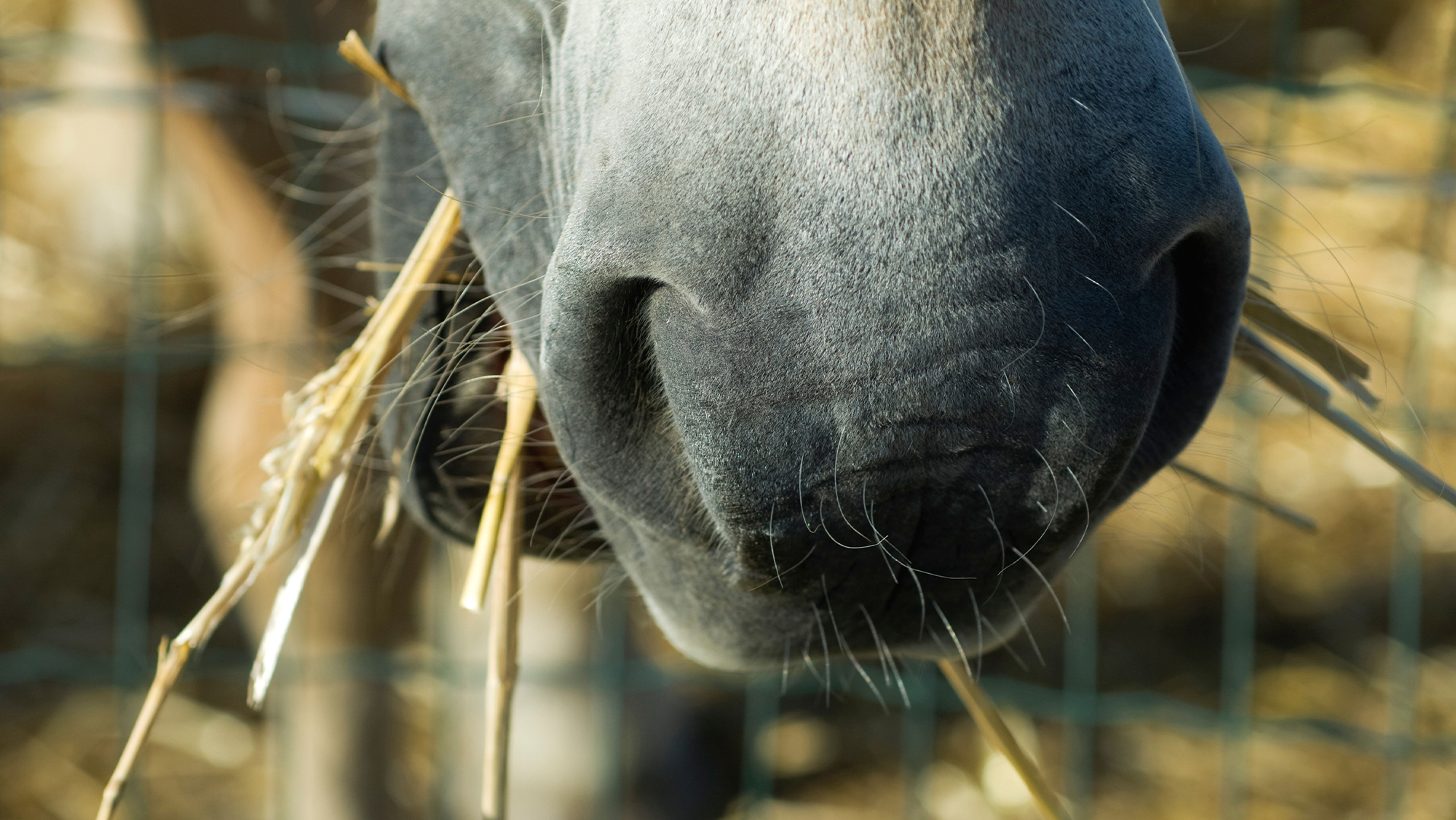
Can you feed soaked straw?
If your dust-sensitive horse has soaked hay, then yes, you can feed soaked straw – but don’t soak it for long.
“About an hour is sufficient,” says Clare. “This is because straw can have a slightly higher bacterial load than hay.”
How much straw can I safely feed my horse?
You can safely replace up to 30% of your horse’s forage ration with straw, provided it is done gradually.
“Some people will say they can feed more, but nutritionists will advise 30% because that’s a safe, general guideline for every healthy horse or pony who is not prone to colic.”
You may also be interested in:
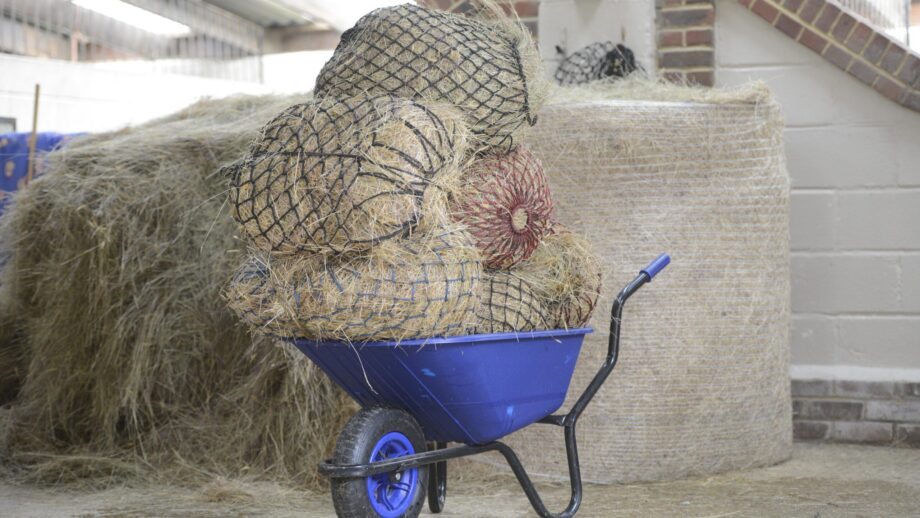
8 ways to reduce your hay bill this winter

New research confirms straw could be valuable weapon in fight against equine obesity
‘We hope the success of the trial means this research will go on to help even more ponies’

Know your forage: which type is right for your horse?
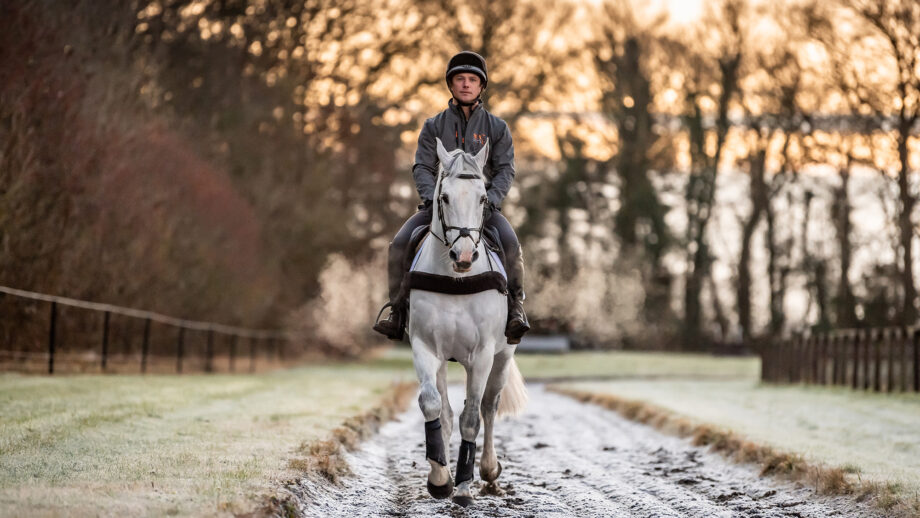
8 tips to help ease the transition to winter with horses
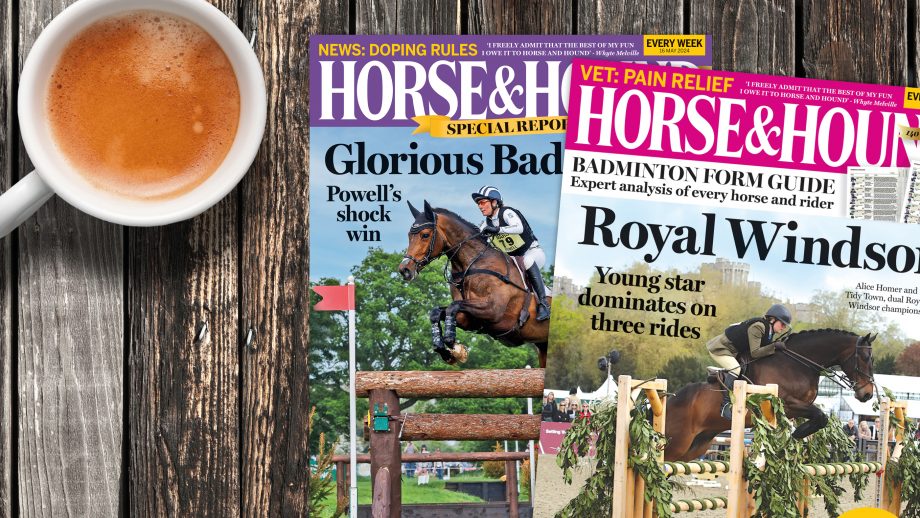
Subscribe to Horse & Hound magazine today – and enjoy unlimited website access all year round
Horse & Hound magazine, out every Thursday, is packed with all the latest news and reports, as well as interviews, specials, nostalgia, vet and training advice. Find how you can enjoy the magazine delivered to your door every week, plus options to upgrade your subscription to access our online service that brings you breaking news and reports as well as other benefits.

